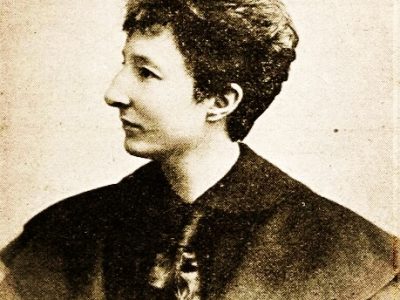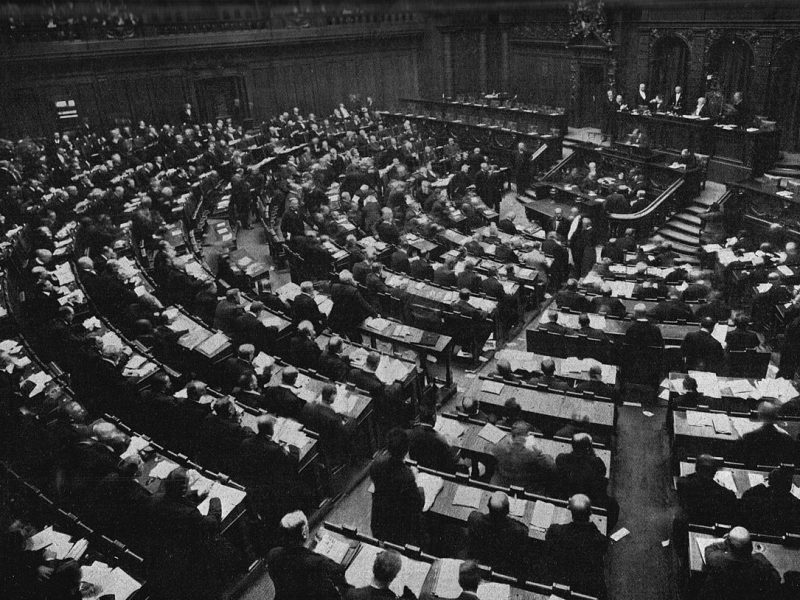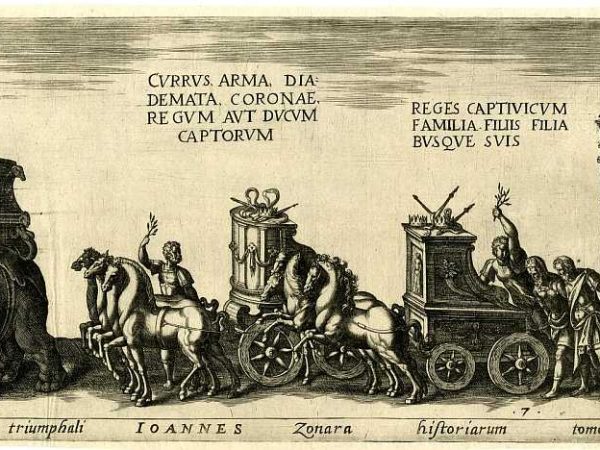lynxx-Blog
Medien, Naher Osten, Türkei, Osmanisches Reich, Islam, Orientalistik
Der Inhaber des lynxx-Blogs hat freundlicherweise Inhalte seines Blogs Geschichte-Wissen zur Verfügung gestellt. Wir danken an dieser Stelle für diese großzügige Hilfe sehr und wünschen dem geneigten Leser bei der Lektüre viel Freude.
Wie wird Anatolien islamisch und türkisch? Teil 2
| Divri?i-Moschee, 13. Jh., Türkei, Weltkulturerbe |
Ich hatte eben in einem Post zuvor die Grundlinien aufzeigen wollen, wie Anatolien vom 11. Jahrhundert an bis in die osmanische Zeit allmählich mehrheitlich islamisch und turkophon wurde:
Wie wird Anatolien islamisch und türkisch? Teil 1
Hier folgen nun noch zwei Leseproben aus zwei Standardwerken zur Osmanischen Geschichte, die die historische Entwicklung vor den Osmanen zwar auch umreissen, ansonsten den Schwerpunkt des Verhältnisses zwischen den Christen und Muslimen, auf die Byzantiner und Osmanen legen:
Donald Quataert: The Ottoman Empire, 1700-1922.:
Origins of the Ottoman state
Great events demand explanations: how are we to understand the rise of great empires such as those of Rome, the Inca, the Ming, Alexander, the British, or the Ottomans? How can these world shaking events be explained?
In brief, the Ottomans arose in the context of: Turkish nomadic invasions that shattered central Byzantine state domination in Asia Minor; a Mongol invasion of the Middle East that brought chaos and increased population pressure on the frontiers; Ottoman policies of pragmatism and flexibility that attracted a host of supporters regardless of religion and social rank; and luck, that placed the Ottomans in the geographic spot that controlled nomadic access to the Balkans, thus rallying additional supporters. In this section follows the more detailed story of the origins of the Ottoman state.
The Ottoman Empire was born around the turn of the thirteenth and fourteenth centuries, in the northwestern corner of the Anatolian peninsula, also called Asia Minor. Extreme confusion – political, cultural, religious, economic, and social – marked the era and the region. For more than a millennium, this area had been part of the Roman Empire and its successor state in the Eastern Mediterranean world, the Byzantine Empire, ruled from Constantinople. Byzantium had once ruled over virtually all of today’s Middle East (except Iran) – the region of modern-day Egypt, Israel, Palestine, Lebanon, Syria, Jordan, Turkey, and parts of Iraq, as well as parts of southeast Europe, north Africa, and Italy. In the seventh century CE, however, it had lost many of those areas, mostly to the expanding new states based in Mecca, Damascus, and Baghdad. With some difficulty, the Byzantine state then reinvented itself and managed to retain its Anatolian provinces. In its reduced form, the Byzantine Empire faced three sets of enemies. From the Mediterranean, the Venetian and Genoese merchant states fought between themselves and (usually separately) against the Byzantines to gain strongholds and economic concessions on the rich Aegean, Black Sea, and eastern Mediterranean trade routes. To their north and west, the Byzantines faced expansive and powerful land-based states, especially the Bulgarian and Serbian kingdoms.
And, beginning at the turn of the first millennium, the Turkish nomads (called Turcoman) appeared on their eastern frontiers. Turkish peoples with their origins in central Asia, in the area around Lake Baikal, began migrating out of these ancestral homes and, c. 1000 CE, started pouring into the Middle East. In their Central Asiatic homes, theTurcoman way of life was marked by shamanist beliefs in religion and economic dependence on animal raising and social values that celebrated personal bravery and considerable freedom and mobility for noble women. The Homeric-style epic, named The Book of Dede Korkut, recounts the stories of heroic men and women, and was written just before the Turcoman expansion into the Middle East. This epic also shows that the Turcoman polity was highly fragmented, with leadership by consensus rather than command. This set of migrations – a major event in world history – created a Turkic speaking belt of men, women, and children from the western borders of China to Asia Minor and led to the formation of the Ottoman state. The nomadic, politically fragmented Turcoman way of life began causing major disturbances in the lives of the settled populations of the Iranian plateau, who bore the brunt of the initial migrations/invasions. As the nomads moved towards and then into the sedentarized Middle East, they converted to Islam but retained many of their shamanist rituals and practices.
Hence, Turkish Islam as it became practiced later on varied considerably in form from Iranian or Arab Islam. As they migrated, the Turcomans and their animals disrupted the economy of the settled regions and the flow of tax revenues which agriculturalists paid to their rulers. Among the Turkish nomadic invaders was the Seljuk family. One of many leaders in charge of smaller or larger nomadic groups drifting westward, the Seljuk family seized control of Iran and its agricultural populations, quickly assimilated into its prevailing Perso-Islamic civilization, and then confronted the problem of what to do with their nomadic followers who were disrupting the settled agricultural life of their new kingdom. A solution to the Seljuks’ problem was to be found in Byzantine Anatolia.
The provinces of Byzantine Anatolia had two sets of features that seem important here. First, they were productive, heavily populated agrarian settlements and thus for the nomads appeared as very attractive targets of plunder. In a word, the Anatolian provinces were rich. They also were Christian. Therefore they offered doubly justified targets of warfare for these Turkish nomads recently converted to Islam and under the influence of popular preachers who had fused shamanist beliefs with Islam.
Was Anatolia attractive to the nomads mainly because it was rich or because it was Christian? Like their crusading Christian contemporaries, the nomads’ motives were a mixture of economic, political, and religious factors. The lands of Anatolia were rich and they were inhabited by (mainly) farmers of another, Christian, faith. For the vast numbers of nomads already in the Middle East, pressured by waves of nomads behind them in central Asia, these were powerful incentives. And so, not long after their entry into Iran, the Turcoman nomads began plundering and raiding the eastern provinces of Byzantium, pulled there by economics, politics, and faith, and pushed there by the centralizing Seljuk rulers of Iran. After enduring the raids for several decades, the central Byzantine state moved to crush the new threat. In 1071, however, the imperial army under the Emperor Romanus Diogenus decisively was crushed at the epochal battle of Manzikert, not far from Lake Van, by the combined military forces of the Turkish nomads temporarily allied with the army of the Seljuk Sultan Alp Arslan. This spelled the ruin of the imperial border defense system in the east, and Turkish nomads, now nearly unchecked, flooded into Byzantium.
For the next several centuries, until the mid-fifteenth century, the history of Anatolia, east and west, can be understood through the metaphor of islands of sedentarized life under Byzantine imperial and feudal lords struggling to exist in a flood tide of Turkish nomads whose leaders, in turn, came to form their own small states. In the short run, Turcoman principalities rose and fell and Byzantine control ebbed and flowed.
Anatolia became a patchwork quilt of tiny Turcoman and Byzantine principalities and statelets, expanding and contracting. At times, Byzantine leaders, imperial and feudal, resisted more or less successfully. But inexorably, in the long run, Byzantine Christian, predominantly Greekspeaking, Anatolia underwent a profound transformation and over time became Turkish speaking and Muslim. This general atmosphere of confusion, indeed chaos, played a crucial role in the emergence of the Ottoman state. In the midst of the Turcoman invasions, the beleaguered Byzantines also were fighting against the Italian merchant states, losing to them chunks of land and other economic assets such as trade monopolies.
Between 1204 and 1261, moreover, Constantinople became the capital of the erstwhile Crusaders, who instead of marching to Palestine, seized and sacked the riches of the imperial city and established their short-lived Latin Christian empire. Historians agree that the 1204 sack of the city struck a blow from which Constantinople never recovered.
The specific context in which the Ottoman state emerged also is linked to the rise of the Mongol Empire under Genghis Khan, its rapid expansion east and west, and its push into the Middle East during the thirteenth century. As the Mongol state expanded, it often accelerated the movement of Turkish nomads, who fled before it into areas that could support their numbers and their livestock. In the middle of the thirteenth century a Mongol general warred on a Seljuk state which had been established at Konya in central Anatolia. This Mongol victory wrecked the relatively large Seljuk sultanate there, which, before the Ottomans, had been the most successful state founded in post-Byzantine Anatolia, and triggered the rise of a number of small Turcoman principalities in its stead. The Mongol presence also prompted the flight of Turcoman nomads who sought pasture lands in the west. These were the border regions of the collapsing Seljuk state on the one hand and the crumbling Byzantine world on the other. This was a changing world, full of Serb and Bulgarian, Genoese and Venetian invaders and of Turkish Muslim nomads and Byzantine Greek Christian peasants. In these Anatolian highlands to the south and east of Byzantine Constantinople, the Ottoman Empire was born.
Historians who are Ottoman specialists like to argue about which was the most important single variable explaining the rise of this extraordinary empire. The question is a fair one since the founder of the dynasty after whom it was named, Osman, was just one of many leaders and not the most powerful, among the various and sundry Turcoman groups on the frontier. Looking down on this world in the year 1300, it would have been impossible to predict that his would be among the most successful states in history. At the time, Osman was in charge of some 40,000 tents of Turcoman nomads. Some of his Turkish-speaking rivals in other parts of the frontier were vastly more successful and commanded 70,000 and 100,000 tents (with two to five persons per tent). There were scores of other Turcoman principalities. All were part of a larger process in which Turcoman nomads of the Anatolian highlands pressed upon and finally occupied the valleys and the coastal plains. Alone among these, the dynasty of Osman triumphed while the others soon disappeared. (…)
The emerging Ottoman dynasty, that traced descent through the male line, was Turkish in origins, emerging in a highly heterogeneous zone populated by Christians and Muslims, Turkish and Greek speakers.
Muslims and Christians alike from Anatolia and beyond flocked to the Ottoman standard for the economic benefits to be won. The Ottoman rulers also attracted some followers because of their self-appointed role as gazis, warriors for the faith fighting against the Christians. But the power of this appeal to religion must be questioned since, at the very same moment, the Ottomans were recruiting large numbers of Greek Christian military commanders and rank-and-file soldiery into their growing military force. Thus, many Christians as well as Muslims followed the Ottomans not for God but for gold and glory – for the riches to be gained, the positions and power to be won. (…)
und Daniel Goffman schreibt in The Ottoman Empire and early modern Europe ab S. 29 ff.:
Imagined beginnings
Religion permeated the Mediterranean world during the age of the Crusades (1097 – c. 1453). It helped produce the separation between West and East, and it justified and excused war, massacre, and murder. Both Catholicism and Sunni Islam jealously guarded their orthodoxies. These stubbornly conventional and monotheistic religions left little room for adaptation or revision. Indeed, Crusaders remain even today a symbol of religiously excused ruthlessness. Nevertheless, even in this ideological sphere the lines between the Islamic and Christian European worlds – especially along their frontiers – were porous and the contacts were often symbiotic. Islamic societies surrounded the small states that Crusaders established in Syria and Palestine, and these new settlers soon learned to coexist with their neighbors. The Arab chronicler Usamah explained the ignorance of newly arrived crusaders: “Everyone who is a fresh emigrant from the Frankish lands is ruder in character than those who have become acclimatized and have held long association with the Moslems.” He then relates the following tale as evidence: Whenever I visited Jerusalem I always entered the Aqsa Mosque, beside which stood a small mosque which the Franks had converted into a church. When I used to enter the Aqsa Mosque, which was occupied by the Templars, . . . who were my friends, the Templars would evacuate the little adjoining mosque so that I might pray in it. One day I entered this mosque, repeated the first formula, “Allah is great,” and stood up in the act of praying, upon which one of the Franks rushed on me, got hold of me and turned my face eastward saying, “This is the way thou shouldst pray!” Ag roup of Templars hastened to him, seized him and repelled him from me. . . They apologized to me, saying, “This is a stranger who has only recently arrived from the land of the Franks and he has never before seen anyone praying except eastward.”
Usamah recounted this anecdote not only to express the ignorance of the crusaders, but also to show how thoroughly exposure to the Islamic world had changed (or, in his thinking, “civilized”) the barbarians from the West. In other words, even in this brutal milieu personal contact refined and complicated perceptions of the “Other.” Stereotypes based upon fear and ignorance dissipated through contact. In the process, the very characters of the conquering Crusaders as well as their local victims became altered. Usamah concretely describes processes that typify frontier societies.
However brutal the immediate effects of the Crusades may have been, some of their long-term consequences were to educate the adversaries about each other and to establish commercial and cultural relations between them. The American frontier has been portrayed similarly as a “middle ground.” Just as our memories of European history privilege the butcheries of the crusaders, such as the “rivers of blood” that flowed down the streets of Jerusalem after its capture in 1099, over other aspects of their sojourn in the Middle East, so do we tend to hark back to the wars and massacres that punctuated relations between native Americans and colonists, and forget the decades of coexistence, identity switching, and “engendering” that prefaced and even attended the demographic blitz of European colonization in the Americas.
The Turkoman push across Anatolia should be recalled similarly. The almost 400-year history of Turkoman–Byzantine relations between the Seljuk defeat of a Byzantine army at the Battle of Manzikert in 1071 and the Ottoman conquest of Constantinople in 1453 was more than a series of bloody military campaigns. It also was a period of compromise, accommodation, and mutual learning in which a frontier society in the process of formation endured and eventually flourished only by adapting to and assuming the structures and strategies of those civilizations that surrounded it.
The political system out of which the Ottoman state emerged certainly constituted such a frontier society. To its east lay the successor states of the Mongol wave that had crashed across the Middle East in the early thirteenth century; to its west lay the Byzantine Empire, whose eastern frontiers, now in western Anatolia, served, as they had for some 600 years, as a bastion against Islam. A series of semi-independent principalities lay nestled between these two behemoths. Their titular head was the Seljuks of Rum (weakened by defeat at the hands of the Mongols), whose capital was in Konya. Nevertheless, a series of relatively small emirates – among them the Mente?eo?lu, the Ayd?no?lu, the Saruhano?lu, the Karasio?lu, and of course the Osmano?lu (the “Ottoman son”) – had by the early fourteenth century emerged to challenge both Seljuk sovereignty over them and Byzantine control over western Anatolia.
This frontier was in many ways a military march between two civilizations: the Byzantine and the Islamic. Such borders, however, tend to be fixed and unbending, which this frontier emphatically was not. The presence of these buffer emirates created a sense of “middle ground,” of a world whose propensities toward compromise, adaptation, and heterodoxy might give birth to innovative institutions and worldviews. It seems likely that the very foreignness of these “statelets” stimulated this condition.
Their leaders were recent arrivals from Central Asia who were Turkic-speaking pastoralists. Some probably retained their animistic beliefs, but even those who were Muslim (or Christian) had converted only recently. Furthermore, their political as well as religious practices remained more central Asian than Middle Eastern. This actuality is most tellingly revealed in local customs of inheritance: rulers divided their realms among sons, brothers, and other relatives, a practice which may have worked in nomadic societies, but which now repeatedly led to the quick collapse of both Mongol and Turkoman states and to political fragmentation within the Anatolian frontier zone.
The emergence of the Ottoman state is incomprehensible unless one understands that this frontier society must have engendered cultural as well as political fractures. An emirate such as the Ayd?no?lus, for example, whose principality included the port town of Smyrna, quickly shrugged off its nomadic past, took to the seas, and became a naval power in the Aegean. It took the Ottomans, whose early state in Bithynia was landlocked, centuries to realize such a leading maritime presence. Similarly, a state such as the Ottoman one, which not only abutted Byzantium but also for long periods of time controlled the countrysides around Byzantine cities such as Nicaea and Bursa (and later Adrianople and Constantinople), must have been far more influenced by Christianity and the institutions of Byzantium than were the Ayd?no?lus, who shared only the seas with the eastern Roman empire. In other words, although these emirates probably all were originated by charismatic chieftains, the particular qualities of their successors and their locations led them in different directions and toward divergent values. (…)
(Bildquelle: Wikimedia Commons)






